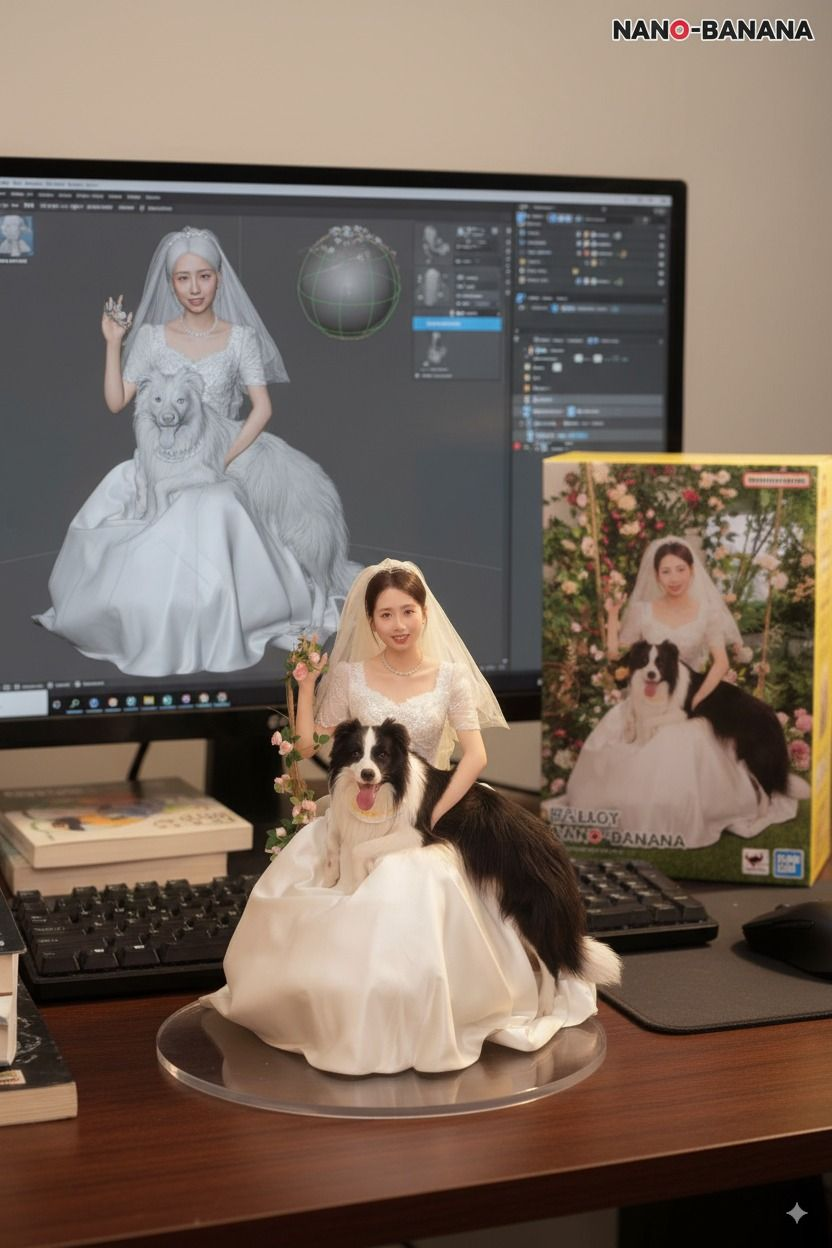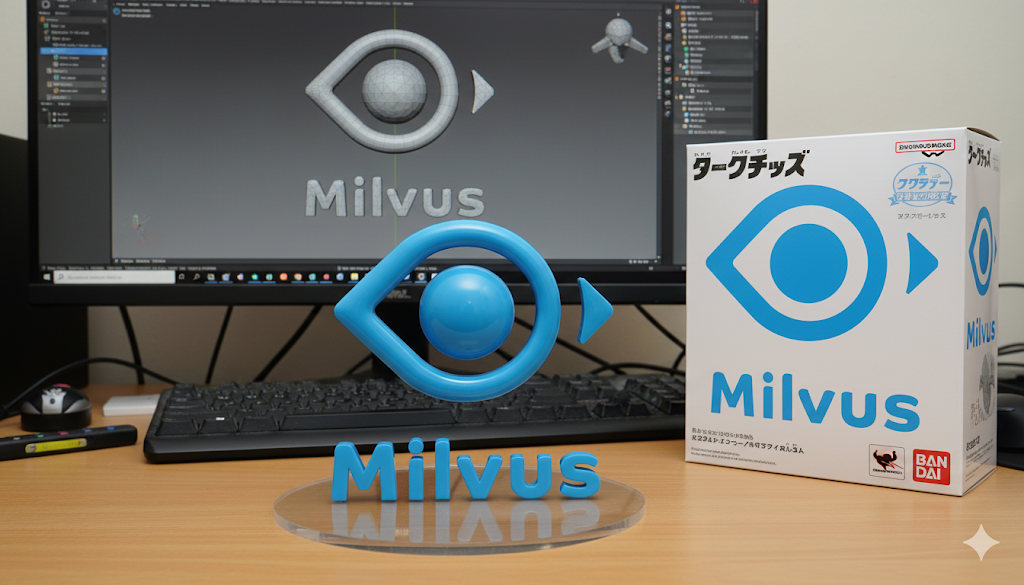You can use Nano Banana to create realistic 3D modeling previews in a way that feels similar to ZBrush renders, but without the overhead of traditional rendering pipelines. The main idea is to supply Nano Banana with both visual input (such as a screenshot of your sculpt or illustration) and a carefully structured text prompt that describes how you want the preview to look. For example, many creators rely on detailed prompts like:
“Use the Nano Banana model to create a 1/7 scale commercialized figure of the character in the illustration, in a realistic style and environment. Place the figure on a computer desk, using a circular transparent acrylic base without any text. On the computer screen, display the ZBrush modeling process of the figure. Next to the screen, place a Bandai-style toy packaging box printed with the original artwork.”
The results are like this:


This type of prompt gives Nano Banana very specific instructions about not only the figure itself but also the environment and context, which makes the output look closer to a commercial-grade preview render.
For developers and technical professionals, the workflow can be integrated into existing modeling pipelines. Suppose you already have a sculpt in ZBrush or Blender. Instead of doing a full material setup and render, you can export a screenshot of the work-in-progress sculpt and combine it with a prompt like the one above. Nano Banana will generate a photorealistic image that simulates clay materials, lighting, and presentation. This saves time when you need a quick “beauty shot” for client reviews, internal feedback, or even promotional mockups. It also helps bridge the gap between raw sculpts and fully rendered assets, giving stakeholders a clearer sense of the finished product without requiring hours of setup.
It’s important to understand the limitations, though. Nano Banana’s output is still image-based, so you won’t get editable textures or true 3D meshes back. That means you still need traditional rendering tools for final production assets. However, as a fast preview engine, Nano Banana shines because it captures details like lighting falloff, reflective surfaces, and even contextual objects (like the acrylic base or toy packaging box). Teams working on commercial figures, collectibles, or character models can use it to generate approval-ready previews at a fraction of the time traditional workflows require. In practice, many teams script this process so that every sculpt update automatically produces several Nano Banana renders, each with different lighting or backgrounds, making iteration cycles much faster.
Beyond Previews: Real-World Use Cases
Teams are already applying Nano Banana in production. A mobile entertainment platform is testing avatar dress-up features where players upload photos and instantly try on in-game accessories. E-commerce brands are using a “shoot once, reuse forever” approach, capturing a single base model image and generating outfit or hairstyle variations instead of running multiple studio shoots.
To make this work at scale, generation needs retrieval. Without it, the model can’t reliably find the right outfits or props from huge media libraries. That’s why many companies pair Nano Banana with Milvus, an open-source vector database that can search billions of images and embeddings. Together, they form a practical multimodal RAG pipeline—search first, then generate.
👉 Read the full tutorial on Nano Banana + Milvus